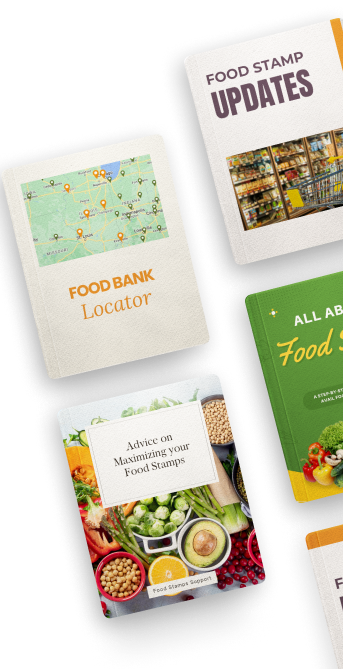Government Assistance Programs for Needy Citizens
The programs offer financial assistance and other types of aid to make the caregiver's life easier. Eligibility for these programs varies from state to state, so it is vital to research and find out what is available to you. They have revolutionized care provision in the home between family members, but they can also come at a significant cost. Some of these programs include the following:
According to the U.S. Department of Labor, the FMLA covers about 60 million workers at more than 7 million workplaces nationwide. An employee must have worked for a covered employer for at least one year and worked at least 1,250 hours during the period preceding the leave. Additionally, the employee's workplace must have at least 50 employees working within 75 miles of the worksite.
The employee must give the employer 30 days' notice of the leave if it is foreseeable or as soon as possible if it is not foreseeable. Employees who take FMLA leave are entitled to reinstatement to the same or equivalent position upon returning to work. In addition, their employers protect them from retaliation for taking FMLA leave. The program has helped millions of workers balance their work and family responsibilities since its enactment in 1993.
It's a civil rights law that protects people with disabilities from discrimination in all areas of public life, including employment, transportation, and education. The ADA also guarantees equal access to public facilities and services like restaurants, hotels, and parks.
It has helped to create a more inclusive society by removing barriers and providing opportunities for people with disabilities. Today, the ADA continues to play an essential role in ensuring that all Americans have an equal chance to participate fully in the life of our nation.
The program is a piece of legislation enacted in 1965. It provides funding for various services and programs that support older adults, including Meals on Wheels, senior centers, and caregiver support.
The OAA also provides funding for research and training to help improve the delivery of services to older adults. In recent years, the OAA has come under threat of cuts or elimination by some members of Congress. However, the OAA continues to enjoy strong bipartisan support, remaining a critical funding source for programs that improve the lives of older Americans.
The Patient Protection and Affordable Care Act, commonly known as Obamacare, is a health insurance reform law passed in 2010. The law makes health insurance more affordable and expands access to coverage. The law includes several provisions, such as subsidies for low- and middle-income households, expanded eligibility for Medicaid, and the creation of state-based health insurance exchanges. The law also requires most Americans to have health insurance or pay the penalty. However, it has reduced the growth rate in health care costs.
The United States Department of Veterans Affairs (V.A.) provides many benefits to U.S. Armed Forces veterans, including health care, disability compensation, education assistance, home loans, and life insurance. V.A. benefits are also available to surviving spouses and dependent children of deceased veterans.
While all veterans are eligible for V.A. benefits, the specific benefits an individual is entitled to receive will depend on their length of service and other factors. Its website provides a comprehensive overview of the benefits available to veterans and information on how to apply for them. Veterans who need assistance navigating the system can also contact their local V.A. office or Veterans Service Organization for help.
The National Family Caregiver Support Program (NFCSP) is a federally funded initiative that provides resources and support to caregivers of older adults and adults with disabilities. The program offers various services, including counseling, respite care, training, and information. Besides, it provides financial assistance to caregivers through the National Family Caregiver Grant program. The grant program offers one-time grants of up to $1,000 to caregivers who require financial assistance. The Administration administers the NFCSP on Aging, a U.S. Department of Health and Human Services division.
The above programs have played a critical role in shaping the beneficiaries' lives. They provide some stability and relief to those struggling to make ends meet. Caregivers often have to sacrifice their career and earnings potential to provide care for their loved ones. These government assistance programs help ease some of the caregivers' financial burdens. On the other hand, they help seniors and the disabled achieve their lifetime dreams.
1. The Family and Medical Leave Act
According to the U.S. Department of Labor, the FMLA covers about 60 million workers at more than 7 million workplaces nationwide. An employee must have worked for a covered employer for at least one year and worked at least 1,250 hours during the period preceding the leave. Additionally, the employee's workplace must have at least 50 employees working within 75 miles of the worksite.
The employee must give the employer 30 days' notice of the leave if it is foreseeable or as soon as possible if it is not foreseeable. Employees who take FMLA leave are entitled to reinstatement to the same or equivalent position upon returning to work. In addition, their employers protect them from retaliation for taking FMLA leave. The program has helped millions of workers balance their work and family responsibilities since its enactment in 1993.
2. The Americans With Disabilities Act
It's a civil rights law that protects people with disabilities from discrimination in all areas of public life, including employment, transportation, and education. The ADA also guarantees equal access to public facilities and services like restaurants, hotels, and parks.
It has helped to create a more inclusive society by removing barriers and providing opportunities for people with disabilities. Today, the ADA continues to play an essential role in ensuring that all Americans have an equal chance to participate fully in the life of our nation.
3. The Older Americans Act
The program is a piece of legislation enacted in 1965. It provides funding for various services and programs that support older adults, including Meals on Wheels, senior centers, and caregiver support.
The OAA also provides funding for research and training to help improve the delivery of services to older adults. In recent years, the OAA has come under threat of cuts or elimination by some members of Congress. However, the OAA continues to enjoy strong bipartisan support, remaining a critical funding source for programs that improve the lives of older Americans.
4. The Patient Protection and Affordable Care Act
The Patient Protection and Affordable Care Act, commonly known as Obamacare, is a health insurance reform law passed in 2010. The law makes health insurance more affordable and expands access to coverage. The law includes several provisions, such as subsidies for low- and middle-income households, expanded eligibility for Medicaid, and the creation of state-based health insurance exchanges. The law also requires most Americans to have health insurance or pay the penalty. However, it has reduced the growth rate in health care costs.
5. Veterans Affairs Benefits
The United States Department of Veterans Affairs (V.A.) provides many benefits to U.S. Armed Forces veterans, including health care, disability compensation, education assistance, home loans, and life insurance. V.A. benefits are also available to surviving spouses and dependent children of deceased veterans.
While all veterans are eligible for V.A. benefits, the specific benefits an individual is entitled to receive will depend on their length of service and other factors. Its website provides a comprehensive overview of the benefits available to veterans and information on how to apply for them. Veterans who need assistance navigating the system can also contact their local V.A. office or Veterans Service Organization for help.
6. The Caregiver Advise, Record, and Enable Act
The National Family Caregiver Support Program (NFCSP) is a federally funded initiative that provides resources and support to caregivers of older adults and adults with disabilities. The program offers various services, including counseling, respite care, training, and information. Besides, it provides financial assistance to caregivers through the National Family Caregiver Grant program. The grant program offers one-time grants of up to $1,000 to caregivers who require financial assistance. The Administration administers the NFCSP on Aging, a U.S. Department of Health and Human Services division.
The above programs have played a critical role in shaping the beneficiaries' lives. They provide some stability and relief to those struggling to make ends meet. Caregivers often have to sacrifice their career and earnings potential to provide care for their loved ones. These government assistance programs help ease some of the caregivers' financial burdens. On the other hand, they help seniors and the disabled achieve their lifetime dreams.

















